Wildfires Explained: Types, Causes and Examples
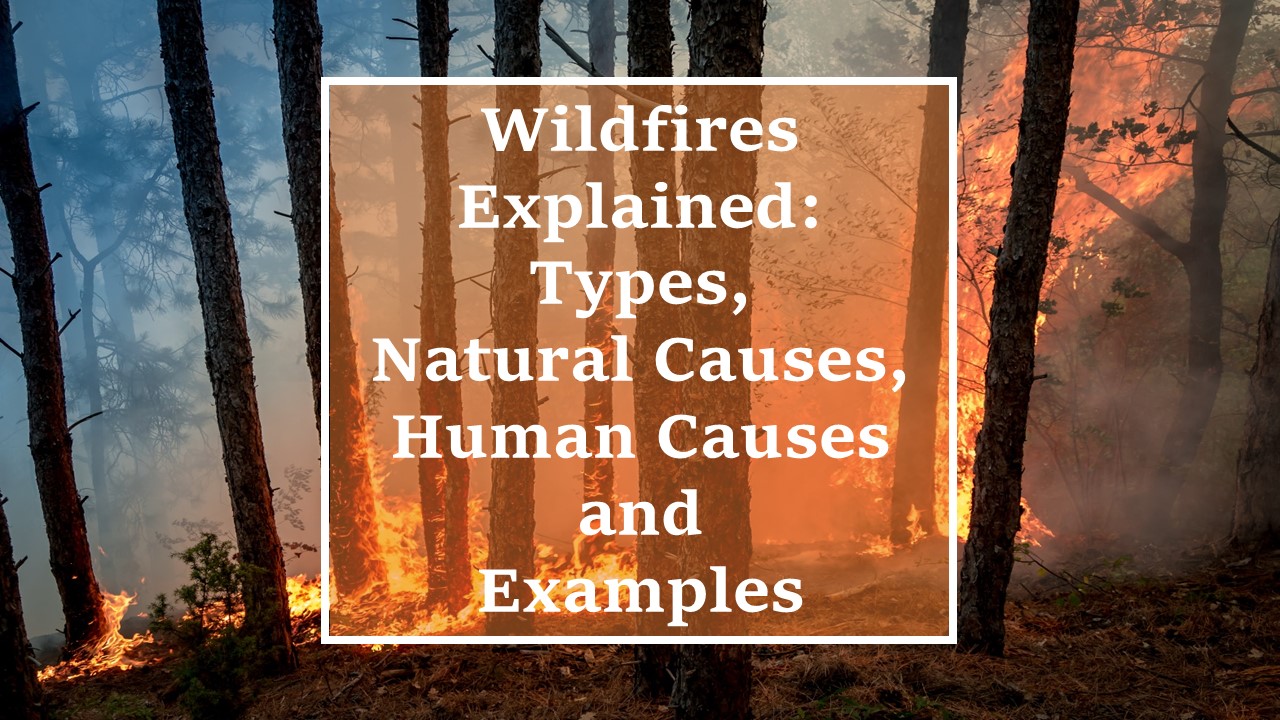
Wildfires are unique among the natural hazards that affect human communities and ecosystems. In fact, they are one of nature’s oldest phenomena. They date back more than 350 million years when trees evolved and spread across the land.
Then, as grass emerged some 20 million years ago, it provided a new type of fuel that could sustain more frequent fires. Eventually, as our climate warmed some 11,500 years ago (the start of the Holocene and present time) wildfires intensified across the world.
What is a wildfire?
A wildfire is a rapid, uncontrolled and high-temperature oxidation process that sustains itself releasing heat, light and other products. In simple terms, a wildfire is a fire event that can carry on by itself and basically releases heat and light.
In general, to start a wildfire, we need three conditions:
- Fuel: trees, grass etc.
- Oxygen: supports the chemical process of burning and
- Heat: natural like lightning or man-made such as deliberate burning.
If one of these conditions is missing, the fire will go out or will not start.
What happens during a wildfire?
So, during a wildfire, trees and plants rapidly break down and burn. During this process, they release considerable amounts of carbon dioxide, water vapor and heat. They also emit other gases in small amounts such as carbon monoxide, nitrogen oxides and methane.
Wildfires typically release smoke which is a mix of these gases together with ash and soot particles. Ash and soot are basically powdery substances that form after burning.
Stages in a wildfire
Generally, a wildfire takes place in three stages: pre-ignition, combustion and extinction.
1. Pre-ignition
During this first stage, pre-ignition, the fuel such as shrubs lose water and heat up to favour ignition. Then pyrolysis occurs. That is, the materials start to decompose because of the high temperature. Pyrolysis typically releases smoke and black soot.
2. Combustion
Combustion then follows. It is simply a process of flaming that releases heat and light.
As it is, a wildfire only occurs if there is sufficient fuel.
Though there are many causes of wildfires, ignition does not automatically lead to them. It typically develops where the vegetation is mature and is large enough to carry the fire across the land.
Additionally, ignition continues throughout the wildfire event. As the fire spreads across the land, ignition repeats itself over and over again.
Types of combustion
Additionally, there are two main types of combustion: flaming combustion and smouldering combustion.
Flaming combustion is the rapid, high temperature burning during the early stages of the fire. It sustains flames so it moves across the landscape producing soot and ash.
But these substances hinder flaming combustion as they deposit on the vegetation.
As a result, smouldering combustion occurs. It is typically the slow, flameless and low-temperature burning of vegetation that ultimately produces charcoal.
3. Extinction
And in the last stage, extinction, the wildfire ceases. So, when fuel and heat become unavailable, the wildfire stops.
Factors that affect wildfires
Also, there are three factors that affect wildfires: fuel, weather conditions and topography.
1. Fuel
The fuel itself varies a lot. It can be grass, small trees, huge forests, decaying material on forest floors etc. It can also be in small or large quantity, alive or dead and of various sizes.
So, the fire will depend on it. As it is, fine materials like grass burn faster than large woody chunks. Also, conditions like landslides and earthquakes can arrange fuel in ways to favour ignition.
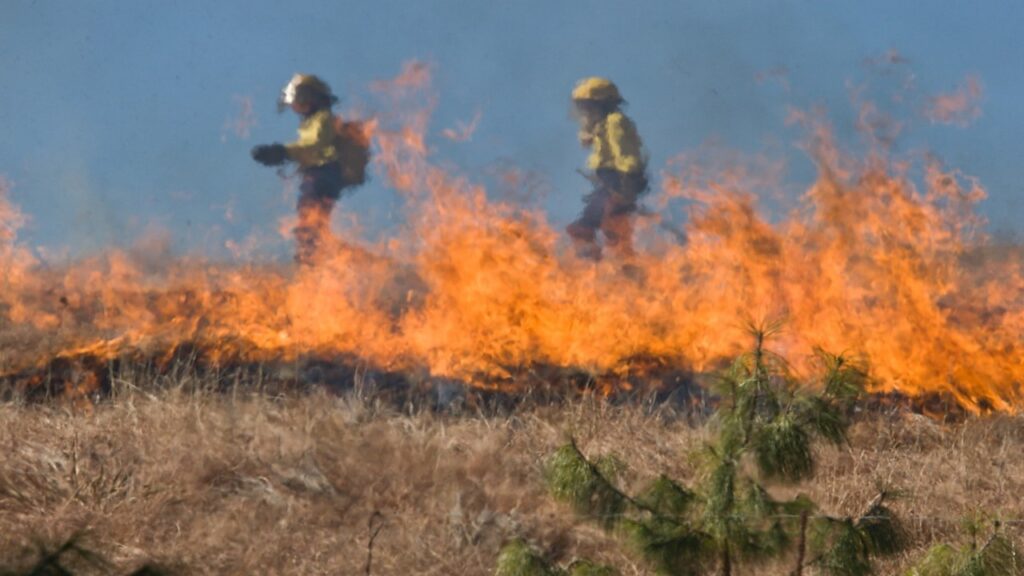
2. Weather conditions
Undoubtedly, the weather conditions that prevail also play an important role in how wildfires spread. Especially temperature, rainfall, wind and relative humidity.
Temperature/Rainfall
In general, hot and dry conditions that we associate with droughts reduce the amount of moisture in fuels. At the same time, these conditions can cause dry thunderstorms to form. Lightning strikes can start wildfires because rain evaporates before it reaches the ground.
Winds
Likewise, strong winds and changing wind patterns heavily affect the spread and intensity of the wildfire. They can carry ambers and spread fire in other areas.
Humidity
Changes in humidity affect the moisture content in fuels. When humidity levels are low, wildfires burn more vigorously.
3. Topography
And topography also influences the course of wildfires. Regions that face the sun tend to have lower moisture content. Hence, they will catch fire more easily.
Likewise, topography also affects wind circulation. Slopes that face prevailing winds are drier than sheltered regions. So, they burn more easily. In the same manner, wildfires tend to spread faster uphill.
Types of wildfires
We basically classify wildfires into three types: ground, surface and crown. But in fact, wildfires are quite complex events and occur mostly as a mix of all three.
Ground wildfires
As the name says, ground wildfires typically creep along the ground with little flaming. Smouldering combustion typically burns the thick organic matter such as roots and debris that lies on the floor. Ground wildfires often result in thick peat deposit layers in marshes and dry swamps.
Surface wildfires
Surface wildfires also move along the ground but with greater intensity. They typically burn grass, shrubs and leaf litter. Surface fires burn slowly with smouldering combustion and little flaming. But they can be quite intense. An example is the chaparral brushland wildfire in Southern California.
Crown wildfires
Crown fires are the most common types of wildfires that we see. They principally spread across tree canopies. Crown wildfires can be due to ground fires that reach the tips of trees or independently.
Strong winds and prevailing weather conditions heavily influence them as well as slopes. Crown fires are nearly impossible to stop and so, we must evacuate humans and animals from their path. They are very common in the boreal forests of Canada.
What causes wildfires?
There are several natural and human causes of wildfires.
Natural causes of wildfires
The natural causes of wildfires are mainly lightning, volcanic eruptions and the self-ignition of coal seams. In fact, natural wildfires have immensely helped early humans harness fire for warmth, cooking and light. And consequently, to spread across the world.
Lightning
As it is, lightning is the most common source of natural wildfire. It typically occurs because of dry thunderstorms.
In regions where humid conditions create rich landscapes with grass, shrubs and trees, dry conditions can be quite damaging.
Weather conditions during dry periods can initiate dry thunderstorms. As a result, when lightning strikes the ground, it can start ground fires. The fire may then spread to the top of trees and across the landscape. What’s more, strong winds that accompany the thunderstorm can speed up the process.
In Colorado, United States, for example, 2500 wildfires occur every year because of lightning.
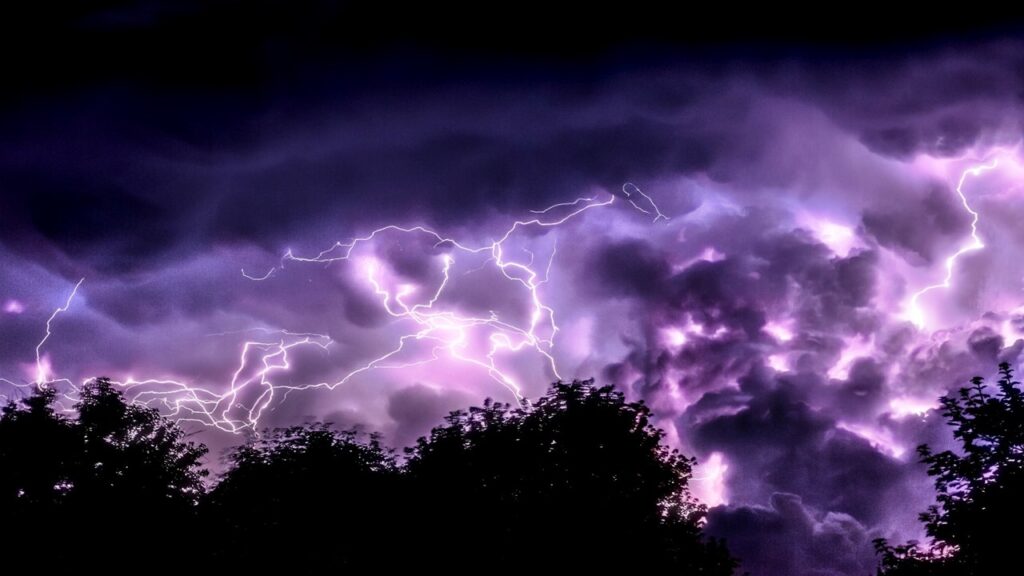
Volcanic eruption
When a volcano erupts, it typically spurts out hot materials. Hot lava can make its way towards bushes and trees and initiate ground fire. As the fire spreads, it can reach treetops and eventually spread out.
Additionally, some volcanoes even release pyroclastic flows. A pyroclastic flow is a thick, fast-moving mix of rock pieces, volcanic ash and hot gases. It is very hot (more than 800 °C) hence burning everything along its way including dry vegetation.
Coal seam fires
A coal seam is basically a coal deposit that we can see through layers of rock. As a matter of fact, the natural combustion of coal in coal seams can lead to wildfires.
Coal seam fires can begin due to high temperatures, wind speed and direction and rock fracture. The fire can move to nearby fuel like dry grass and spread.
Human causes of wildfires
Since the beginning of the Holocene epoch, geologic records show an increase in the amount of charcoal in our sediment. This indicates an increase in fires. Researchers estimate that it is mainly due to early humans who used fires to hunt and clear forests.
Today, human activities cause more than 90% of wildfires. They basically arise because of field burning, arson and carelessness.
Field burning
Very often, farmers set fire to cultivated lands to clear weeds, stubble and waste before they plant a new crop. Sometimes, these fires can get out of hand and initiate wildfires.
For example, the catastrophic 1997/98 wildfire in Indonesia started due to land clearing. Dry conditions due to an El Nino event led to the burn down of 1.5 million ha of forest including protected lands.
Arson
Arson is the crime of illegally and purposefully setting property on fire. As it is, malicious people often set cultivated land in rural areas on fire which can then spread into wildfires.
They often do so as an act of vandalism, to protest, to cover up a crime or for revenge. In the United States for instance, arsonists start over 0.5 million fires every year. Thus, it is a leading cause of wildfire in many states like Florida and California.
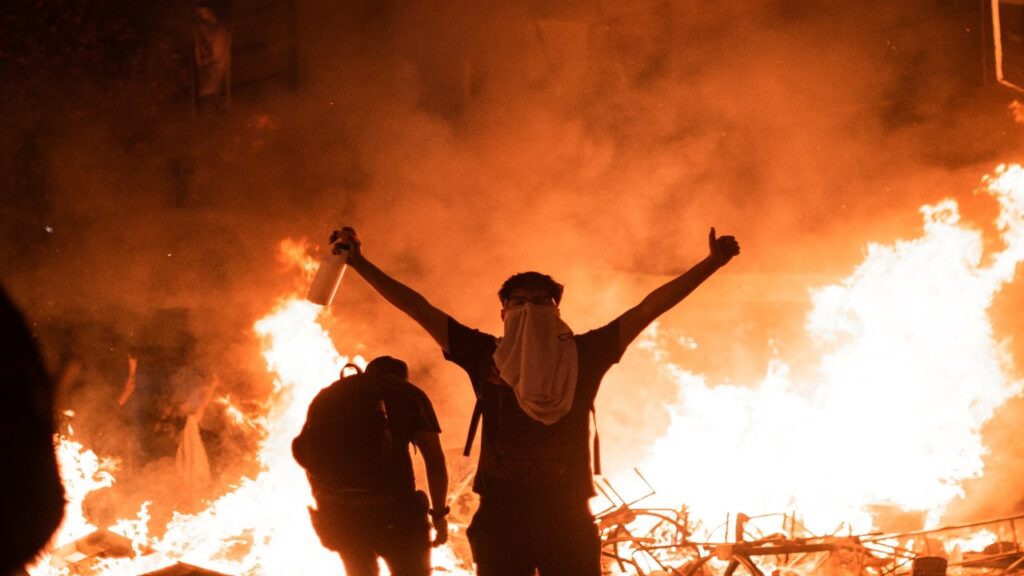
Carelessness
Now, there are many activities indeed that can initiate wildfires. In fact, carelessness is by far the most common reason why wildfires start in the United States.
Some examples include smoking in forests, campfire ambers and lighting firecrackers. Accidents like vehicle crashes and railroad breaks can also cause wildfires.
Where do wildfires often occur?
As it is, wildfires affect 3 to 4 million km2 of global land every year. It roughly equals to 3% of the vegetated surface on Earth.
They affect various types of land such as tropical forests, grasslands, peatlands and boreal forests. Wildfires typically occur during the dry seasons when vegetations lose water and the temperature rises.
Frequency of wildfires
In general, wildfires occur every few years in savannah grasslands. But in forests, they can take place over several decades to centuries.
Currently, more than 80% of wildfires occur in grasslands and savannahs in Africa and Australia. A few events also occur in South Asia and South America. The rest occurs mainly in shrub and forest lands across the world.
Regions that frequently face wildfires are the United States, Canada, Mediterranean Europe, Australia and Africa. Particular high-risk regions are southern California and south-eastern Australia.
Wildfires are different from controlled fires where we intentionally set specific regions on fire.
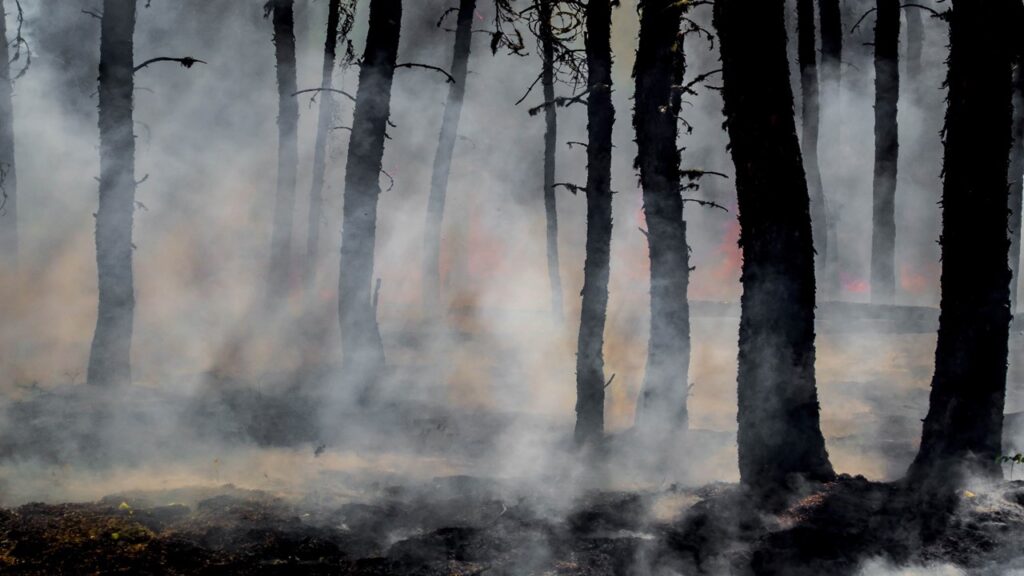

Pingback: Controlled Fires Explained: Importance, Disadvantages - Yo Nature
Pingback: Effects of wildfires: Positive, Negative, Examples - Yo Nature